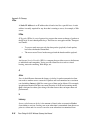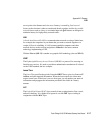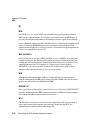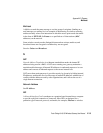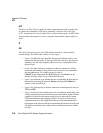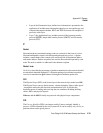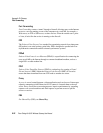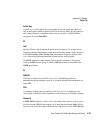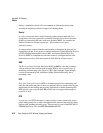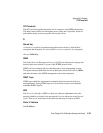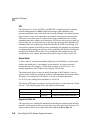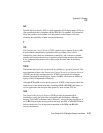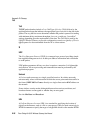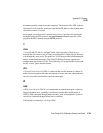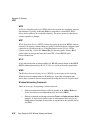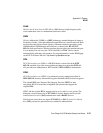Appendix E: Glossary
Router
E-24
Psion Teklogix 9160 G2 Wireless Gateway User Manual
defines a standard by which APs can communicate information about client
associations and disassociations in support of roaming clients.
Router
A router is a network device which forwards packets between networks. It is
connected to at least two networks, commonly between two local area networks
(LANs) or between a LAN and a wide-area network (WAN), for example, the
Internet. Routers are located at gateways—places where two or more
networks connect.
A router uses the content of headers and its tables to determine the best path for
forwarding a packet. It uses protocols such as the Internet Control Message Protocol
(ICMP), Routing Information Protocol (RIP), and Internet Router Discovery
Protocol (IRDP) to communicate with other routers to configure the best route
between any two hosts. The router performs little filtering of data it passes.
RSSI
The Received Signal Strength Indication (RSSI) an 802.1x value that calculates
voltage relative to the received signal strength. RSSI is one of several ways of
measuring and indicating radio frequency (RF) signal strength. Signal strength
can also be measured in mW (milliwatts), dBms (decibel milliwatts), and a
percentage value.
RTP
Real-Time Transport Protocol (RTP) is an Internet protocol for transmitting real-
time data like audio and video. It does not guarantee delivery but provides support
mechanisms for the sending and receiving applications to enable streaming data.
RTP typically runs on top of the UDP protocol, but can support other transport
protocols as well.
RTS
A request to send (RTS) message is a signal sent by a client station to the access
point, asking permission to send a data packet and to prevent other wireless client
stations from grabbing the radio waves. This message is a part of the IEEE 802.11
CSMA/CA protocol. (See also RTS Threshold and CTS.)



